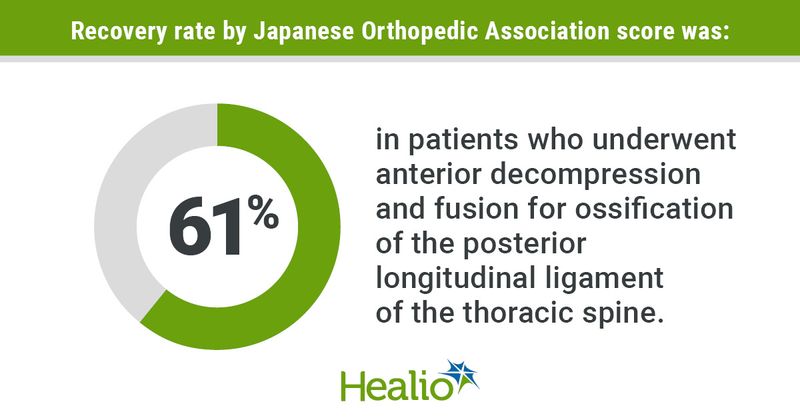Anterior decompression may be safe for ossification of the posterior longitudinal ligament
Key takeaways:
- Of the 15 patients who underwent anterior decompression, 60% could not walk preoperatively.
- Anterior decompression required an extra 70 minutes of operating time vs. posterior decompression.
LAS VEGAS — Results presented here showed anterior decompression and fusion via a posterolateral approach may be safe and effective for treatment of beak-type ossification of the posterior longitudinal ligament in the thoracic spine.
Satoshi Kato, MD, and colleagues performed anterior decompression and fusion (ADF) via a posterolateral approach for beak-type ossification of the posterior longitudinal ligament (OPLL) in the thoracic spine and posterior decompression and fusion (PDF) with instrumented fusion for other types of OPLL. Researchers analyzed clinical outcomes during a minimum 1-year follow-up.


“Between 2011 and 2021 using this surgical strategy, we operated on 40 patients with severe myelopathy due to thoracic OPLL,” Kato said.
Of the 15 patients who underwent ADF, Kato said 60% could not walk preoperatively. Compared with PDF, Kato noted ADF required an extra 70 minutes of operating time. He added all patients who underwent ADF had adequate OPLL floating or removal without significant complications.
“Of the six patients in the ADF group who were not ambulatory preoperatively, all recovered postoperatively,” Kato said. “Recovery rate by [Japanese Orthopedic Association] JOA score in the ADF group was 61%.”

